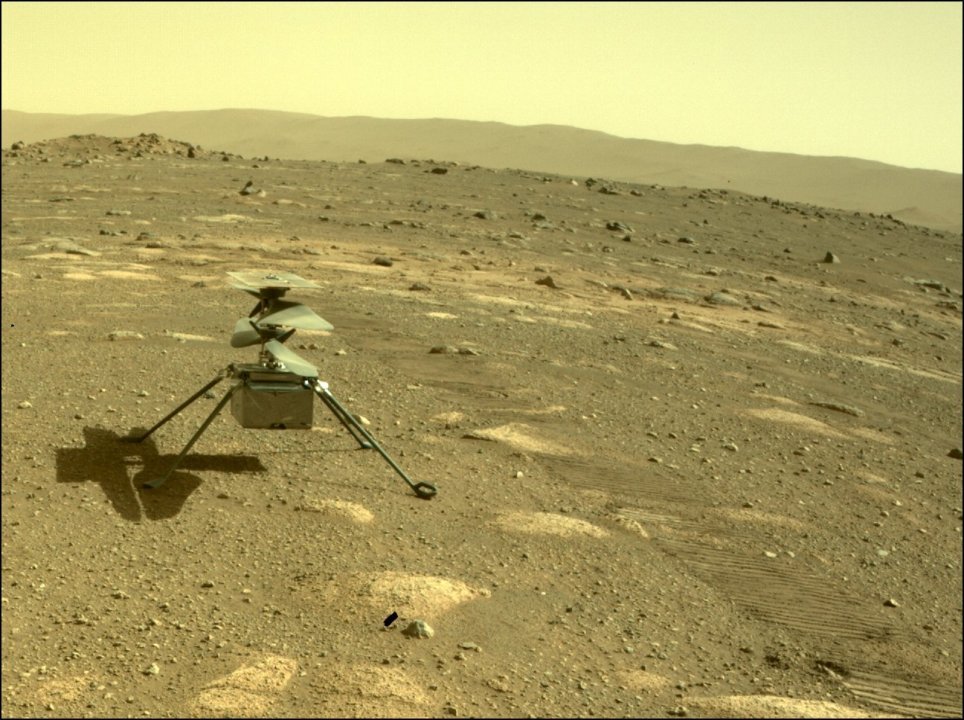In Today’s Deep Space Extra… The Ingenuity helicopter survives first night alone on Mars, marking a new milestone ahead of flight. The Orion spacecraft undergoes a series of impact tests with a crew module configuration based on final design.
Human Space Exploration
Nanoracks Bishop Airlock connects to International Space Station Wi-Fi®
Coalition Member in the News – Nanoracks
The Beacon (4/5): The Nanoracks-built Bishop Airlock is the first-ever commercially operated airlock on the International Space Station (ISS). The airlock expands commercial services offered on the ISS by introducing a new way to build and launch satellites, as well as a new way to robotically move large payloads and equipment. To perform these functions, Bishop uploads a significant amount of Wi-Fi traffic when detached from the ISS. When attached, it enhances the ISS’s exterior Wi-Fi infrastructure.
Space Science
JPL’s 4-pound Mars helicopter survives first night alone on planet. Next milestone: taking flight
Press-Telegram (4/5): The Ingenuity helicopter is now sitting on the surface of Mars, and it just survived its first freezing Martian night unsheltered by the Perseverance rover that carried it to the Red Planet. If all goes according to plan, the helicopter could make its historic first flight as early as Sunday.
NASA’s InSight lander detects two medium marsquakes on the Red Planet
Space.com (4/5): NASA’s Mars InSight lander has resumed “Marsquake” detections as the weather at its Elysium Planitia landing site has become more favorable. In March, InSight detected two major quakes. The lander touched down in November 2018 to begin the first studies of the Red Planet crust, mantle and core. More than 500 quakes have been logged so far.
NASA releases breathtaking rover photo of “rainbow” on Mars
Futurism (4/5): The image from the Hazard Avoidance Camera aboard NASA’s Perseverance rover appears to show a Martian rainbow composed of dust, rather than moisture in the very thin atmosphere. Given the lack of rain on Mars, it should not be a rainbow, but NASA has not clarified what it could be.
Dark matter could be made of black holes from the beginning of time
Space.com (4/5): Other than its gravitational influence, little is known about mysterious dark matter. Recent observations of gravitational waves, however, suggest dark matter may be composed of concentrations of small black holes dating to the start of the universe. Findings were published in the journal Physical Review Letters.
Opinion
Space Settlement Act should guide Nelson’s NASA tenure
SpaceNews.com (4/5): In an op-ed, Steven Wolfe, president and co-founder of the Beyond Earth Institute and Tony DeTora, co-founder and vice president of policy coherence at the Beyond Earth Institute, call for a look back to the Space Settlement Act of 1988. The legislation featured a strategy paving the way for human settlements beyond the Earth. The strategy should provide an underpinning for NASA as Bill Nelson, the former U.S. senator and congressman from Florida, is considered by the Senate to serve as the agency’s next administrator, according to the authors.
Other News
Lockheed Martin buys up to 58 launches over the next decade from rocket builder ABL Space
Coalition Member in the News – Lockheed Martin
CNBC (4/5): ABL, a medium lift launch services provider entered a long-term agreement with Lockheed Martin to provide at least 26 and potentially up to 58 rocket launches through the end of the decade. ABL has not announced financial terms for use of its RS1 rocket from launch facilities around the world, including Vandenberg Space Force Base, California, and Cape Canaveral Space Force Station, Florida.
Technology race against China a key concern for Pentagon acquisition nominee
SpaceNews.com (4/5): Michael Brown, a veteran tech industry executive and President Biden’s nominee to serve as the nation’s undersecretary of defense for acquisition and sustainment, is among those with concerns that China is too easily able to access U.S. technical innovation, including advances in artificial intelligence, autonomous vehicles, augmented-virtual reality, robotics, and blockchain technology.
Musk says methane leak doomed latest Starship test flight
Spaceflightnow.com (4/5): SpaceX founder Elon Musk on Monday attributed the March 30 explosive loss of the company’s 11th Starship prototype to a methane propellant leak during the landing phase of the South Texas test flight. The next test flight will feature a new version of the liquid methane and oxygen fueled Starship, which is envisioned as the upper stage for a future Super Heavy launch vehicle for human missions to the Moon and Mars.
Diversion
Watch NASA drop an Orion crew spacecraft into a pool today for water impact test
Space.com (4/6): Tune in today at 1:45 p.m. EDT as engineers drop a 14,000-pound test version of the Orion spacecraft into the Hydro Impact Basin at NASA’s Langley Research Center. The event is part of a series of water impact drop tests to better understand what the capsule and its crew will experience when landing back on Earth after Artemis missions to the Moon.

